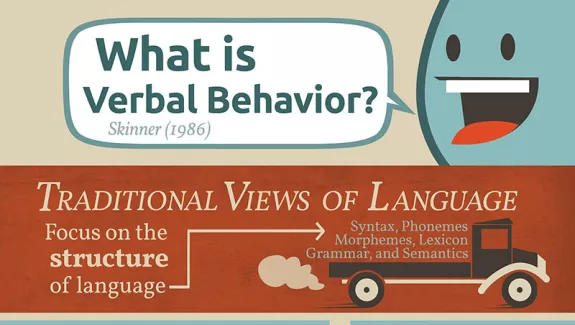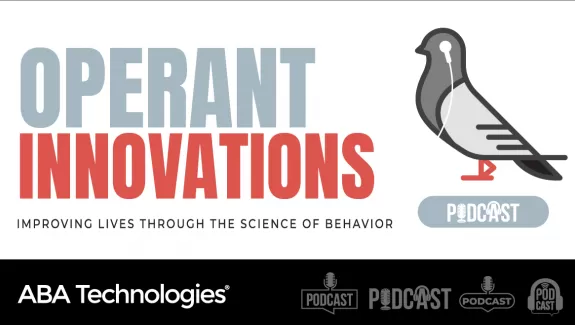
The Term DRO
Bad or Possibly Redeemable Label?
A procedure in which each target response postpones a scheduled reinforcer most often is described in both the basic and applied research and practice literature as a differential-reinforcement-of-other-behavior schedule, or DRO. The term first was used by Reynolds (1961), although in a paper received two months before Reynolds’s paper, Kelleher (1961) used an identical procedure, but labeled it “differential reinforcement of pausing.” Even before that, Skinner, in Behavior of Organisms (1938) described the condition as the reinforcement of not responding, a phrase echoed in Schoenfeld and Farmer’s (1970) description of what most people call DRO as the reinforcement of “not R.” Grant (1964) called a similar procedure in classical conditioning “omission training.” Although there are many ways to name this arrangement, all of them involve an imposed period of non-reinforcement following a target response, such that the reinforcer is delivered only in the absence of that target response.
Differential reinforcement of pausing, omission training, and differential reinforcement of not responding or “not R” all specify what is being reinforced in measurable, albeit negative, terms: the target response must not occur. The label DRO, by contrast, suggests the active reinforcement of some non-target response—the “other behavior” of the label.
The problem with this latter description  is that the “other behavior” that is being reinforced is neither specified nor, as a result, measured. That is, the other behavior is hypothetical. The “O” of DRO is one of many hypothetical constructs used by behavior analysis. Although there is nothing wrong with such constructs in principle, like so many hypothetical constructs the “O” finds its way to being the cause of the absence of the target response. All we observe with DRO is that the target response is absent—nothing else. We have no evidence that its absence is because of the reinforcement of some other response; this is an inference. It may or may not be a reasonable one.
is that the “other behavior” that is being reinforced is neither specified nor, as a result, measured. That is, the other behavior is hypothetical. The “O” of DRO is one of many hypothetical constructs used by behavior analysis. Although there is nothing wrong with such constructs in principle, like so many hypothetical constructs the “O” finds its way to being the cause of the absence of the target response. All we observe with DRO is that the target response is absent—nothing else. We have no evidence that its absence is because of the reinforcement of some other response; this is an inference. It may or may not be a reasonable one.
Does DRO, then, join my pet peeve, non-contingent reinforcement (NCR) as one of those terms that is used not because it is logical or accurate, but just because everyone uses it? I think so. I admit that I use it, for the same bad reasons that many of my colleagues use NCR. As with NCR, there are better terms. I prefer terms that specify procedures and not outcomes because we don’t know what the outcome is until we measure it. I like differential reinforcement of zero (response) rate because (a) it specifies the operation of reinforcing the absence of a response, (b) it keeps the procedure in the context of schedules rather than the more nebulous “omission training,” and (c) it retains the familiar DRO abbreviation that everyone recognizes. I prefer it over the “not R” descriptors because it specifies what is being reinforced in positive rather than negative terms and over DRP because pausing makes more sense when “DRO” is combined with some other schedule requiring a response (e.g., Craig, Lattal, & Hall 2014).
References
Craig, A., Lattal, K. A., & Hall, E. G. (2014). Pausing as an operant: schedule and stimulus control. Journal of the Experimental Analysis of Behavior, 101. 230-245.
Grant, D. A. (1964). Classical and operant conditioning. In A. W. Mellon (Ed.), Categories of human learning. New York: Academic Press.
Kelleher, R. T. (1961). Schedules of conditioned reinforcement during experimental extinction. Journal of the Experimental Analysis of Behavior, 4, 1-5.
Reynolds, G. S. (1961). Behavioral contrast. Journal of the Experimental Analysis of Behavior, 4, 57-71.
Schoenfeld, W.N., & Farmer, J. (1970). Reinforcement schedules and the behavior stream. In W. N. Schoenfeld (Ed., The theory of reinforcement schedules (pp. 215-245). New York: Appleton Century Crofts.
Skinner, B. F. (1938). Behavior of organisms. New York: Appleton Century Crofts.


